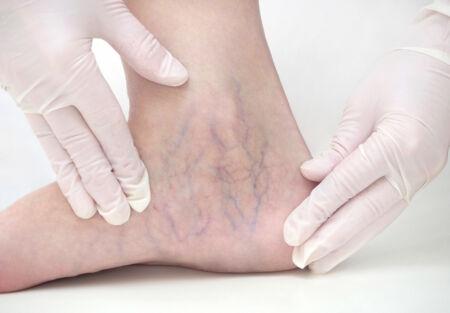
You probably recognize spider veins and varicose veins. But do you know about their lesser known cousin?
Venous insufficiency — an umbrella medical term for a breakdown of blood flow within the veins — actually manifests as three different vein conditions. Perhaps the two most well-known are varicose veins and spider veins. But there is a third, lesser-known type of venous insufficiency: reticular veins.
All three develop when tiny valves in the leg veins weaken and cannot return deoxygenated blood to the heart. Known as venous reflux, this build-up of pooled blood eventually stretches the vein wall outward from under the skin and causes a distended varicose vein, a smaller, flatter spider vein, or a reticular vein.
Reticular veins are also called feeder veins because they feed into spider veins. Consequently, treating reticular veins eliminates spider veins at the same time. If you’ve been treated for spider veins that continue to reappear, it’s likely because the reticular veins remain active and are delivering blood to the spider veins.
In terms of size, reticular veins are usually about 2 to 3 millimeters in diameter, making them smaller than varicose veins but larger than spider veins. Although similar in color to varicose veins (blue and purple), reticular veins don’t typically protrude as varicose veins do. Reticular veins commonly appear on the inner or back of the thighs or knee, as well as the lower leg and ankle. Unlike spider veins, reticular veins don’t develop on the face.
Yet like varicose and spider veins, reticular veins often don’t cause discomfort and are considered a cosmetic issue. However, in some cases, the area surrounding reticular veins may itch or burn. That separates them from spider veins, which rarely develop noticeable symptoms.
Reticular veins arise for many of the same reasons as varicose veins and spider veins: heredity, age, sedentary lifestyle, obesity, pregnancy, and hormonal changes in women. Simply standing or sitting for long periods can hamper blood flow and lead to reticular veins or other vein conditions. So if you work at a job where you sit or stand all day, try to exercise your calf muscles as much as possible by taking brief walks or flexing your ankles.
The same treatment method for spider veins — sclerotherapy — is recommended for reticular veins. In this procedure, your vein specialist injects a safe chemical solution or foam into the abnormal vein. This sets off a reaction that irritates and swells the vein, forcing it close as the vein walls stick together. Blood flow is redirected to healthier veins, and the reticular vein fades over a period of months. If you have several reticular veins, you may need more than one treatment session to eliminate the damaged veins.
If you think you have reticular veins, the doctors and staff at Center for Vein Restoration will employ the latest diagnostic tools and treatment techniques to get your veins healthy again. We’re experienced in treating many types of venous conditions and we’re happy to discuss all therapies and help you choose the right one for your lifestyle. Contact us today for a consultation.